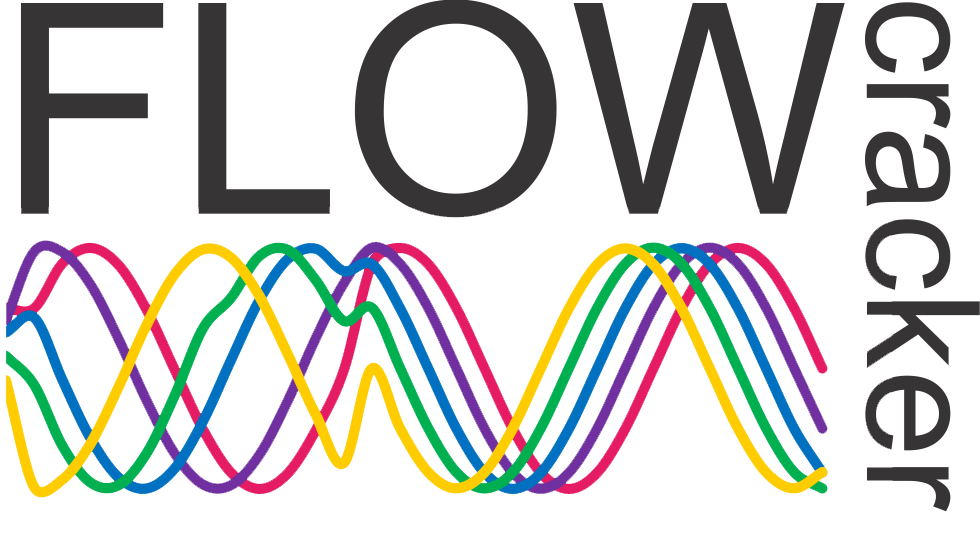
Designing for Continuity & Adaptability

Designing for Continuity & Adaptability
“Your Org Chart Shows Control. Your Flow Map Shows Value.”
Take a look at your organization’s org chart. What do you see?
Roles. Reporting lines. Boundaries. It’s a map of control — and that’s not necessarily a bad thing. Control helps us scale. It clarifies accountability. It supports continuity. But when it comes to delivering value in a dynamic, digital, and often unpredictable world, control alone won’t get you there.
Now, lay your value stream map on top of your org chart. You’ll often see the disconnect. Value doesn’t flow neatly down a hierarchy. It weaves across functions, hops through approvals, and often pauses — stuck between two departments, two tools, or two priorities. In today’s complex environments, this misalignment between structure and flow is more than an operational inconvenience. It’s a strategic liability.
The org chart is the organization’s nervous system — it sends signals, ensures continuity, and keeps the body functioning. But flow is the circulatory system — it delivers oxygen (value) to where it’s needed. If flow is blocked, it doesn’t matter how strong your lines of control are.
This blog is a practical invitation to rethink how we structure, without blowing everything up. We’ll explore how to recognize when the org chart is blocking flow, how to design with both continuity and adaptability in mind, and how OD professionals, enterprise architects, and functional leaders can become stewards of flow — not just custodians of structure.
Because the question isn’t whether to choose between structure and agility. The real challenge is how to design for both.
The Hidden Cost of Structure
Structure is Static. Flow is Dynamic.
Structure gives us clarity. It defines who reports to whom, how budgets are allocated, and where responsibilities begin and end. Most organizations invest significant energy into perfecting their structure — through reorgs, operating model redesigns, and span-of-control adjustments. And yet, when it comes to delivering value in a changing world, structure alone often falls short.
Why? Because structure is static. Flow is dynamic.
Value doesn’t follow reporting lines. It follows need. It responds to shifting market signals, customer behaviors, and operational realities. And it rarely moves in a straight line.
The challenge arises when static structures — designed for continuity — attempt to govern dynamic flow. Decision pathways become clogged as approvals wind through hierarchies that weren’t designed for the current context. Cross-functional efforts stall because the structure lacks the flexibility to realign around new priorities. People with the relevant knowledge are trapped behind role boundaries. And efforts to improve often default to optimizing within the function, not across the system.
This mismatch leads to three types of invisible cost:
- Delay: Work sits waiting — for approvals, for access, for alignment.
- Distortion: Messages mutate as they pass through layers not built for feedback-rich, cross-boundary exchange.
- Disengagement: Talented people become frustrated as they navigate a system optimized for permission, not progress.
The point isn’t to discard structure — it’s to understand its nature. Think of structure as scaffolding, not concrete. It should support the build, but not harden in ways that block future growth.
Continuity vs. Adaptability
Legacy Isn’t the Enemy. Rigidity Is.
You step into a room expecting a team — but something feels off.
Transformation conversations often begin with a critique of the current state. “We need to break silos.” “This org structure is outdated.” “We need to move faster.” While the intention is progress, the underlying assumption is often flawed: that legacy systems, structures, or processes are inherently the problem.
But legacy systems — including your org chart — are not inherently bad. They were built for good reasons. They provide continuity: enabling repeatability, ensuring compliance, protecting quality, and supporting scale. The challenge isn’t that these structures exist. The challenge is when they become too rigid to evolve with changing needs.
Rigidity, not legacy, is what blocks adaptability.
When leaders treat continuity and adaptability as a trade-off, they risk swinging the pendulum too far in either direction:
- In pursuit of speed, they dismantle governance mechanisms that protect quality.
- In fear of chaos, they preserve outdated hierarchies that slow learning and responsiveness.
The real opportunity lies in designing systems that do both:
- Preserve the essentials — your organization’s core capabilities, values, and risk controls.
- Enable flex — through modular structures, cross-functional teaming, and role clarity that allows decision-making closer to the work.
It’s not about tearing down the old to build the new. It’s about layering adaptability into the existing system — with intent, respect, and precision.
Designing for Flow Across the Org Chart
To enable flow without dismantling hierarchy, consider these four design strategies:
- Anchor Around Value Streams: Map out how customer value is created across departments. Then create teams or overlays that align to those value streams, regardless of functional lines.
- Create Modular Teams with Clear Interfaces: Structure teams like building blocks — each with autonomy in scope, but clarity on how they connect to others.
- Use Lightweight Governance: Replace static gatekeeping with regular, fast-paced governance forums focused on enabling progress, not controlling it.
- Invest in Role Clarity at the Boundaries: Define and empower bridging roles to make handoffs smoother, decisions faster, and priorities more aligned.
Org Architects as Flow Enablers
Today’s org architects — whether OD professionals, enterprise architects, or functional heads — must go beyond designing control systems. They must become stewards of movement. That means:
- Thinking in living systems, not static charts.
- Designing interfaces, not just roles.
- Enabling adaptability, not just efficiency.
- Partnering with teams at the edges of the system, not designing from the center alone.
Architecture is no longer just about alignment — it’s about dynamic coherence across a constantly changing system.
Best Practices & Common Pitfalls
✅ What Works:
- Map flow before changing structure.
- Design modular teams with clear handoffs.
- Empower bridging roles across silos.
- Use lightweight, principle-based governance.
- Measure throughput and flow, not just task efficiency.
🚫 What to Avoid:
- Equating structure with design.
- Treating reorgs as silver bullets.
- Optimizing functions over end-to-end value.
- Ignoring informal influence networks.
- Confusing autonomy with siloing.
Conclusion – A Call to Reflect, Experiment, and Act
Your Org Chart is a Snapshot. Your Flow is a Movie.
It’s time to move beyond static structures and begin designing systems for movement, learning, and coherence.
Don’t throw away what works. Evolve it.
Don’t chase the next reorg. Enable better flow in the one you already have.
Your transformation doesn’t start with a new chart. It starts with a better question:
“How does value move through this system — and what’s blocking it?”
